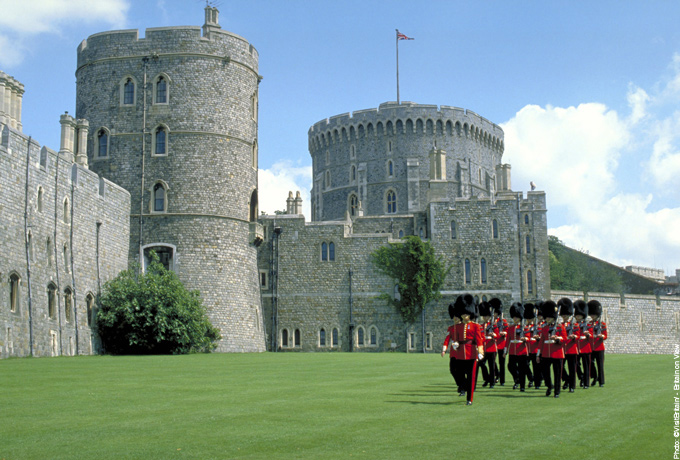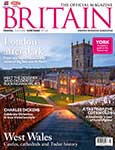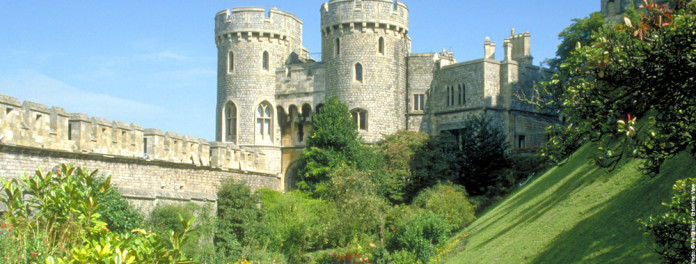With its historic castle and acres of outstanding countryside, Windsor wears its royal seal of approval well. Add to that its elegant hotels, fine dining and superb shopping and you’ll find a town that’s not to be missed

There’s something rather wonderful about Windsor. It’s a town that’s crowned by a castle; a home that has space for old and new; a place where the magnificent outdoors is central to its very being, and a world where pomp and ceremony are par for the course. It’s undoubtedly Berkshire’s jewel, and from the swathe of the Great Park to the south to the sweep of the River Thames to the north and the mix of history, culture and heritage in between, a visit here will leave you wanting more.
From its position at the top of the hill, Windsor Castle watches over the charming, civilised town. It’s a perfect fit – it defines the landscape but it doesn’t dominate, and it impresses but it doesn’t impose. No mean feat indeed, for what is the oldest royal residence in continuous use and also the largest inhabited castle in the world. There’s been a castle on this site for over 900 years and incredibly its footprint hasn’t changed since it was founded by William the Conqueror in the 11th century.
It was built as part of a chain of Norman fortifications around London, its position in the Thames valley chosen to secure the western approach to the capital, but thanks to its location and proximity to a royal hunting forest, it quickly became a royal residence. It’s now been home to 39 monarchs – today it’s widely known to be the Queen’s favourite of her three official residences – and over the years has been adapted and rebuilt to accommodate changing tastes and needs.
When necessary it was strengthened against rebellion, and in peaceful times, palatial accommodation was created. Windsor Castle is divided into three principal areas. The steeply sloping Lower Ward is the most public, where you’ll find St George’s Chapel, the residences of the Military Knights of Windsor and the Guard’s parade ground. The Round Tower and moat (now an ornamental garden) are the focus of the Middle Ward, while the splendid State Apartments, which have been open to visitors since 1848 are in the Upper Ward. As is The Gallery and Queen Mary’s Dolls’ House, a true masterpiece in miniature complete with running water and electricity, that was built by Sir Edwin Lutyens in 1924.

In recent years, the most significant changes have been the result of restoration work following the fire of 1992 – the reconstruction of St George’s Hall is simply superb, and in 2002 the creation of the Jubilee Garden to mark The Queen’s Golden Jubilee. But there’s so much more to Windsor than just the castle.
A stone’s throw from the gates is the web of cobbled streets known locally as Guildhall Island. Many of the delightful old buildings that line these paths date from the 17th century and some are believed to have once been linked to the castle by a series of underground tunnels. Legend also has it that William Shakespeare wrote The Merry Wives of Windsor in one of the buildings, while another is said to have been home to Nell Gwynne, Charles II’s favourite mistress. And at just 51 feet and 10 inches long, Queen Charlotte Street (named after the wife of George III) is the shortest in Britain. On one corner stands the eyecatching and totally intruiging Crooked House, which, as its name suggests, leans at a rather surprising angle. Next door, and not to be missed, is the Guildhall.
Completed in 1690 by Sir Christopher Wren, it has an open ground floor (once the site of a corn market) with a series of meeting rooms above that are supported on columns and arches of Portland stone. Look closely, however, and you’ll see that the four central columns are purely decorative. Today, the building is a popular wedding venue and it was here that Prince Charles married Camilla in 2005.
This area is also a perfect vantage point for watching the Guards as they march up the High Street, past the Queen Victoria statue, to the castle where the changing ceremony takes place. Wearing full uniform and often accompanied by a band, the Guards are a popular sight with tourists and locals alike, and of course a proud reminder of the town’s royal connections. Right in the heart of Windsor, on the Grade II-listed site of the 100-year old railway station, is Windsor Royal Shopping and here, and in the surrounding network of streets, is an abundance of shops that’ll tempt even the most discerning of customers. All the usual high street names are joined by a selection of independent stores and a generous helping of eateries, from stylish cafes to historic pubs and hotels with top-class chefs. While across the river, only a short stroll over Windsor Bridge, awaits Eton and its High Street that’s lined with a thriving selection of galleries, boutiques and gift shops. As Windsor is defined by its Castle, Eton is synonymous with its famous college, and its much photographed buildings and uniform of black tailcoat and pinstripe trousers cause quite a stir among visitors.
Founded in 1440 by Henry VI, the College has been educating boys for nearly six centuries, including many British Prime Ministers, and today it’s one of the most exclusive schools in the world. Its position on the world’s stage is soon to be cemented further as nearby Dorney Lake, which is privately owned by the College, will be the venue for the rowing and kayaking events in the 2012 Olympics. Nothing’s too far in Windsor, or Eton for that matter.
In fact you can happily while away a few hours wondering around and soaking up the sights and sounds. Their location on one of the prettiest stretches of the River Thames, with boats chugging past and swans gliding seamlessly, means the Thames Path offers a very pleasant walk, or there’s the option to settle down and enjoy a leisurely boat trip up stream, to the race course or Maidenhead, and back. But to really stretch your legs, you should head to the Great Park, an area of over 4,800 acres that’s accessible from Windsor town centre.
Today it’s a wildlife and conservation area but it was once a hunting forest popular with the Saxon kings. Walk The Long Walk, a three-mile elm-tree lined road that links Windsor Castle with Snow Hill, keeping an eye open for the resident deer, or head to The Savill Garden where the striking new rose garden provides a sensory experience within its 35 acres.
A little further afield, the Royal Borough’s (that’s Windsor and nearby Maidenhead) equestrian events and activities can be enjoyed. There’s racing and jump meetings at Royal Windsor and Ascot racecourses during the year, and don’t forget polo, the oldest ball game in the world. Whether you want to watch or perhaps even take part, there are clubs that welcome non members during the April to September season.
However much time you have to spare, and whatever time of year you choose to visit, Royal Windsor is a thriving, inviting, welcoming town that’s ripe for exploring. And whether you arrive, and then leave, by car, train or plane (Heathrow airport is conveniently just a short drive away), your lasting impression is more than likely to be that first or final snatched glimpse of the Castle – an historic landmark offering a taste of history and a glimpse into royal life – sitting comfortably on the horizon.
Related articles
|
Click here to subscribe! |
Download BRITAIN Magazine to your mobile today






 © 2024
© 2024